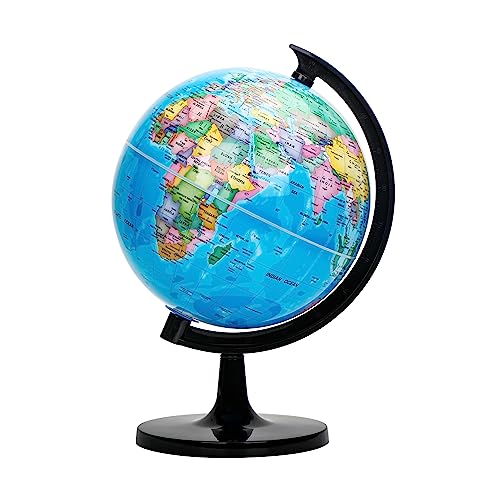Introduction
Terrestrial globes are spherical representations of the Earth that provide a three-dimensional view of our planet. They are designed to accurately depict the Earth’s geography, including its continents, countries, cities, bodies of water, and other natural and man-made features. But have you ever wondered how these globes work and what goes into creating them? In this article, we will explore the inner workings of terrestrial globes and the process behind their creation.
Understanding the Construction
A typical terrestrial globe consists of a hollow sphere made of durable materials such as plastic, glass, or metal. The sphere is often mounted on a stand or axis, allowing it to rotate freely in any direction. The outer surface of the globe is commonly marked with latitudinal and longitudinal lines, forming a grid that aids in locating specific points on the globe.
The globe’s internal structure is what gives it its unique functionality. Inside the hollow sphere, there is a series of printed or painted maps that accurately represent the Earth’s surface. These maps are carefully applied to the inner surface of the sphere, allowing for a seamless depiction of the Earth’s features when viewed from the outside.
Creating the Maps
The maps used in terrestrial globes are created using a variety of techniques, including sophisticated computer modeling and traditional cartography. Cartographers meticulously design and create these maps by gathering data from multiple sources such as satellite imagery, aerial surveys, topographical maps, and geographic databases.
Once the data is collected, it undergoes a process known as projection, where it is transformed from a three-dimensional representation to a two-dimensional map. This is necessary because the Earth’s surface cannot be accurately depicted on a flat surface without distortion.
Various projection methods are used to create different types of maps, such as the popular Mercator projection which preserves accurate angles and shapes but distorts the sizes of landmasses at higher latitudes. Once the maps are created, they are carefully scaled and aligned to fit the surface of the hollow globe, ensuring accurate representation when viewed from various angles.
Mounting and Rotating Mechanisms
To allow the globe to rotate freely in any direction, it is mounted on an axis or stand that allows for smooth movement. The mounting mechanism typically consists of a rotating base that connects to the bottom of the globe and allows it to spin horizontally. Some globes also include mounting options that allow for tilting or rotating the globe vertically.
The key to a smooth rotation is the use of ball bearings or similar mechanisms that reduce friction between the globe and its mount. This allows the globe to be easily turned without causing damage or excessive resistance.
Interactive and Modern Globes
In recent years, advancements in technology have led to the development of interactive and modern globes. These globes often feature built-in LED lights, touchscreen displays, and interactive features that provide additional information about specific locations, landmarks, or geographical facts.
Some electronic globes even incorporate augmented reality (AR) technology, allowing users to view additional information or 3D models of specific areas by using a smartphone or tablet. These modern globes provide a new level of interactivity and engagement, making them valuable educational tools and intriguing decor pieces.
In conclusion, terrestrial globes work by accurately representing the Earth’s geography through the use of carefully designed maps applied to the inner surface of a hollow sphere. These globes are constructed using durable materials, mounted on rotating mechanisms, and often feature additional interactive features for educational and decorative purposes. The process of creating these globes involves cartography, projection, scaling, and alignment to ensure accurate representation when viewed from various angles. Whether used for educational purposes or simply as decorative pieces, terrestrial globes continue to captivate our curiosity and provide a tangible representation of our planet.






